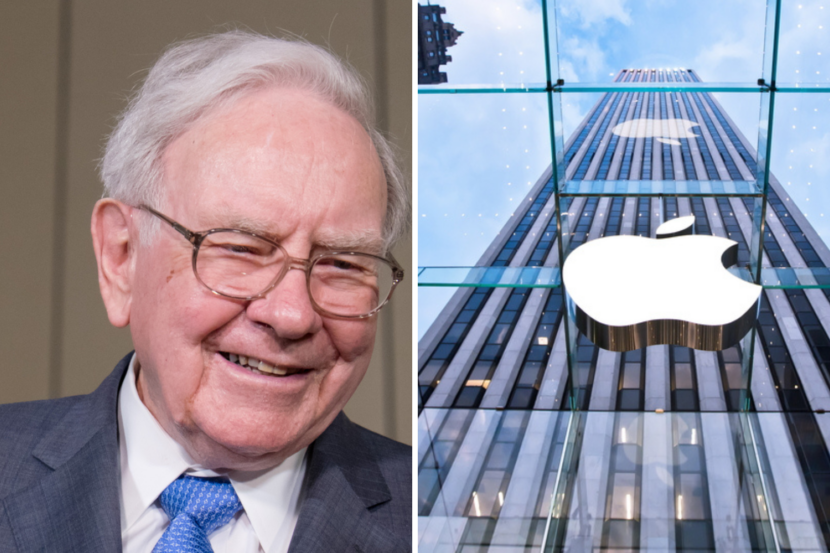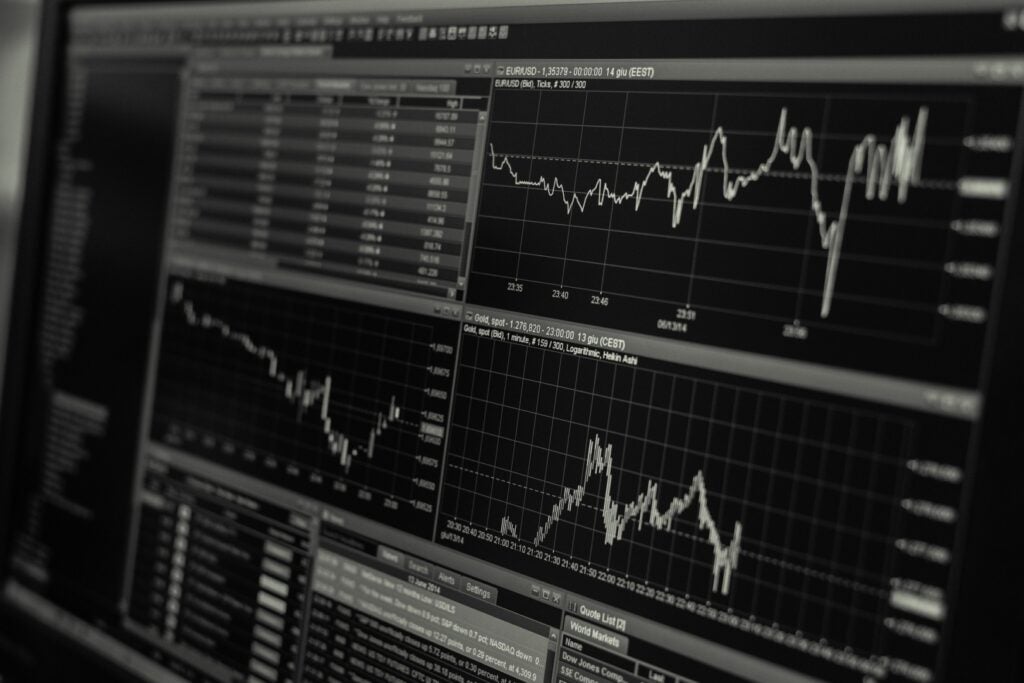
Illustration by Nathalie Lees
Value managers are in the midst of what finally looks like a comeback. The questions for investors now are just how long this value recovery can last, and how best to ride it.
The recovery comes as investors peel themselves away from pricey growth stocks to add some of the cheaper companies that are well positioned for a global economic rebound as the world emerges from the pandemic. And it follows a decade of underperformance that has been hard on the most battle-hardy contrarians. Storied value fund firms—including GMO, Royce Investment Partners, and Third Avenue Management—have suffered sharp outflows over the past decade, according to
International Value Advisers, better known as IVA, announced in March that it would liquidate its two funds and shut down. Other value funds have shuttered or gravitated toward growthier fare in order to survive.
Yet things seem different now. Over the past couple of months, the Russell 1000 Value has outperformed the Russell 1000 Growth by the biggest margin in about two decades. That has offered some redemption for veteran value managers, such as the $28 billion
(ticker: OAKIX) manager David Herro, who recalls the pushback last spring when he gave clients his rationale for buying
(DAI.Germany) as its price cratered.
“Clients were saying, ‘Don’t you know we are going into a recession?’ You have to have the courage of conviction,” says Herro, who cited the company’s strong balance sheet and management. “If you didn’t stay true to your ditty, you don’t get the recovery we experienced in the second and fourth quarters.”
And what a recovery it has been. Funds like Herro’s saw returns of 50% or greater in the past year, repairing long-term performance records that had been tarnished by the past decade’s rough patch. Value, of course, comes in different flavors, and the recovery so far has been kindest to value managers who loaded up on deeply unloved materials, energy, and financial companies.
Rising interest rates have been a major catalyst for the shift toward value. But valuations, a recovery in profits, and portfolios that are underweight value stocks could keep the momentum going. However, the type of value stock that does better could shift as the year goes on, from lower-quality to higher-quality stocks that boast stronger returns on assets, equity, and capital, according to a recent client note from Bank of America strategist Savita Subramanian.
Investors looking to benefit from a value comeback might want a mix of funds positioned from the different stages of the recovery, in the U.S. and abroad. Here are six funds run by veteran managers with strong track records that have also done well in the past year’s rebound.
The $4.3 billion
Neuberger Berman Large Cap Value
fund (NPNAX) bet big last year on some of the market’s most unloved sectors and reaped the rewards, returning 84% in the past year and beating 96% of its Morningstar peers.
Manager Eli Salzmann focused on sectors like materials, especially copper and gold, that have been starved for capital in recent years as money flocked to technology and consumer-discretionary companies. That “capacity deprivation” sets the stage for sharp margin growth as demand recovers for companies like Freeport-McMoRan (FCX). Not only does the copper miner benefit from a global economic recovery, but it’s also a backdoor into the shift to electric vehicles and clean energy—transitions that will require more copper and could extend the traditional recovery cycle, says Salzmann.
A similar trend is at play in energy, a sector that Salzmann says is learning from its mistakes, as companies allocate 60% to 80% of cash flows, rather than all of it, to capital spending.
(XOM) has been a “dog of the dogs,” pursuing an aggressive growth strategy when investors wanted discipline and a focus on free cash flow, Salzmann says. But now, the company, a top holding, is focusing on its core business and has the right asset mix.
When the market fretted over the risks on banks’ loan portfolios last spring, Salzmann went on a shopping spree, adding to financials, including global giants like
(BAC) and
(JPM), as well as regional banks like
(TFC),
(CMA), and
(RF) that should get a bigger boost from loan growth and rising interest rates. Salzmann sees a more protracted, broader value recovery as the market enters a higher interest-rate environment amid the unprecedented amounts of fiscal and monetary policy around the world, as well as a period of deglobalization and increased protectionism that will raise prices.
Read More
Like Salzmann, Herro has been hunting in deeply unloved parts of the market—but abroad. That has taken him to continental Europe and the United Kingdom, which investors have neglected for roughly a decade amid concerns about defaults in countries like Greece, political volatility, and, more recently, Brexit. “It’s almost like the perfect storm after 10 years of a drought. Brexit is behind us, and a lot of what ailed European and international value is now in the rearview,” Herro says.
As the U.K. recovers from the pandemic and settles into life outside the European Union, Herro says strong and “severely overcapitalized” banks like
(LYG) and
(NWG) will benefit from pent-up demand for investing and borrowing that had been put off amid Brexit uncertainty.
Herro has also waded into Chinese internet companies during the sector’s rout in the past year.
Holding (BABA) and
(700.Hong Kong), which Herro owns through South African internet group
(NPN.South Africa), have been hit hard in the past year amid regulatory concerns at home and geopolitical tensions with the U.S., creating value in companies with strong business models, he says.
Sarah Ketterer, co-manager of the $5.8 billion
(CIVVX), isn’t shopping much in the most battered sectors and isn’t sold on a meaningful rise in interest rates. Ketterer also thinks that the party in cyclicals may be winding down, especially after the 80% gains globally in these economically sensitive stocks since the first Covid-19 vaccine won approval late last year—another reason that traditional value sectors like financials and energy don’t interest her much. These sectors also face constraints to their growth, with energy, for example, facing an expensive long-term transition away from fossil fuels.
Instead, Ketterer sees more value these days in European drugmakers like
(SAN.France),
(NOVN.Switzerland), and
(ROG.Switzerland), which have suffered amid postponed elective surgeries and doctors’ visits. The companies are positioned for a recovery but also for a world where vaccines become more important, and ample free cash flow gives these companies the wherewithal to buy machine learning and other tools to speed up drug discovery and cut costs, says Ketterer.
Technology companies like
(SAP) are also on her radar. “It’s a legacy software vendor—about as negative as it gets—but 70% of revenues are sticky,” Ketterer says. Plus, Ketterer says the company is led by a young, dynamic CEO, Christian Klein, who is in the early stages of a cloud transition and also taking subsidiaries public, creating what she describes as “one of those rare opportunities.”
Unlike Ketterer,
Dodge & Cox International Stock
(DODFX) co-manager Diana Strandberg still sees upside in some of the cyclical sectors that have led the recovery—like financials, which account for 30% of the fund, including holdings such as
(BNP.France) and
(UBSG.Switzerland), and emerging market banks like India’s
(IBN).
Many European and emerging market banks have spent the past decade rebuilding their capital and balance sheets, increasing their returns on assets and earnings power—and doing it in Europe against a negative interest-rate backdrop. Yet Strandberg says investors haven’t noticed that these banks aren’t what they were during the financial crisis. Earnings revisions are rising, yet many still trade at eight to 10 times earnings. Plus, since banks had to hold off on dividends and buybacks during the pandemic, Strandberg sees the possibility of these companies becoming big income stocks as capital distributions are resumed.
However, Strandberg cautions against a dogmatic approach and focusing on labels like deep value or relative value—or even classifying certain sectors or companies as value. The $42 billion value fund, which has about a fifth of assets in emerging markets, returned 4.6% on average over the past 15 years, beating 93% of its peers. “Labels are dangerous when you are investing,” Strandberg says. “The starting point matters, and that’s why we are always measuring valuations and fundamentals, but we keep an open mind and not just think we are a value manager so we buy ‘value’ stocks—not only is that changing, but also sometimes stocks are cheap because they should be.”
More recently, Strandberg and team have favored pharmaceuticals over consumer staples. While their valuations are similar, Strandberg sees greater upside from drugmakers’ research and development. She has favored companies that are in the midst of a restructuring or ones that are focused on areas like vaccines, immunology, and rare diseases that are more protected from regulatory concerns.
Restructuring opportunities are also attractive to T. Rowe Price Value (TRVLX) fund manager Mark Finn. He has been focusing lately on companies in the middle of the value spectrum—those not facing long-term problems—that are misunderstood or addressing self-inflicted problems, like
(GE), which had made some ill-timed acquisitions and saddled its balance sheet with leverage. Now, though, Finn says that CEO Larry Culp is fixing many of the issues, and the company includes strong businesses like aircraft engines, power, and healthcare.
Finn, whose fund returned an average annual 12.1% over the past decade to beat 92% of peers, scooped up banks, discount retailers, and industrials like
(DE) and
(CAT) last spring, but is now looking elsewhere. “The cyclicals don’t scream real cheap right now. There’s a lot of optimism built into those.”
Instead, Finn sees more value in companies like
(PG). The company is cheap, at 20 times cash flow, compared with its historical valuation and is in the midst of a turnaround. It has taken share in its major markets and has an underleveraged balance sheet, Finn says.
He also likes utilities such as
(D) and
(XEL) that have been hit as investors pursue higher-yielding options amid rising interest rates. Also attractive:
(SHW), which he says is cheap compared with historical valuations and tethered to the home-building and remodeling boom.
While not traditional value fare, technology companies, including
(FB) and
(CRM), have drawn Finn’s attention. He says Salesforce has a great business model that is well positioned for the recovery, but the stock is in investor no-man’s land, ignored by growth investors and not on value managers’ radar, even though it is in the Russell 1000 Value index.
Technology is also a heavy weighting at the $4 billion
fund (PARWX), which has beaten 98% of its peers over the past year without owning any energy or materials stocks. Since taking the sole reins after sustainable-investing pioneer Jerome Dodson’s retirement, fund manager Billy Hwan has increased risk management, reducing the heavy concentration in chip companies. Hwan has reallocated some of that money to higher-quality software and service companies like
(PAYX), which he says is well positioned to help companies navigate remote work, flexible hours, and contractor relationships. While chip companies face a risk from continuing U.S.-China tensions, since they get more than half of sales from China, efforts to bolster U.S. chip production could help holdings like
(MU) and
(INTC).
The fund, which integrates environmental, social, and governance factors into its analysis, steers clear of deep value and areas in secular decline, instead focusing on higher-quality stocks that are misunderstood, like
(HBI). The company had struggled with acquisitions and competition in its underwear business, but new management is reducing the amount of products it sells and focusing on its fast-growing Champion brand, while also trying to cater to a younger demographics, Hwan says.
Stimulus has helped cushion household savings and given consumers a bit more to spend as they emerge from the pandemic. Hwan sees 2021 as the year of the consumer, a reason that 10% of the fund is in consumer credit companies like
(MA),
(AXP), and
(COF).
For investors looking for comparisons with other value rallies, Hwan sees more similarities between the current comeback and the one in 2000 after the dot-com bubble burst, than the recovery after the global financial crisis that tripped up value managers. “There’s nothing structurally wrong with the economy in terms of credit” as there was after the financial crisis, he says, “so I think the value rotation could last several years.”
Only time will tell whether he’s correct in his assessment, but investors may want to take a more holistic view of value as they try to ride the recovery in the near term.
Note: Data through March 30. Five- and 10-year returns are annualized.
Source: Morningstar
Write to Reshma Kapadia at reshma.kapadia@barrons.com





